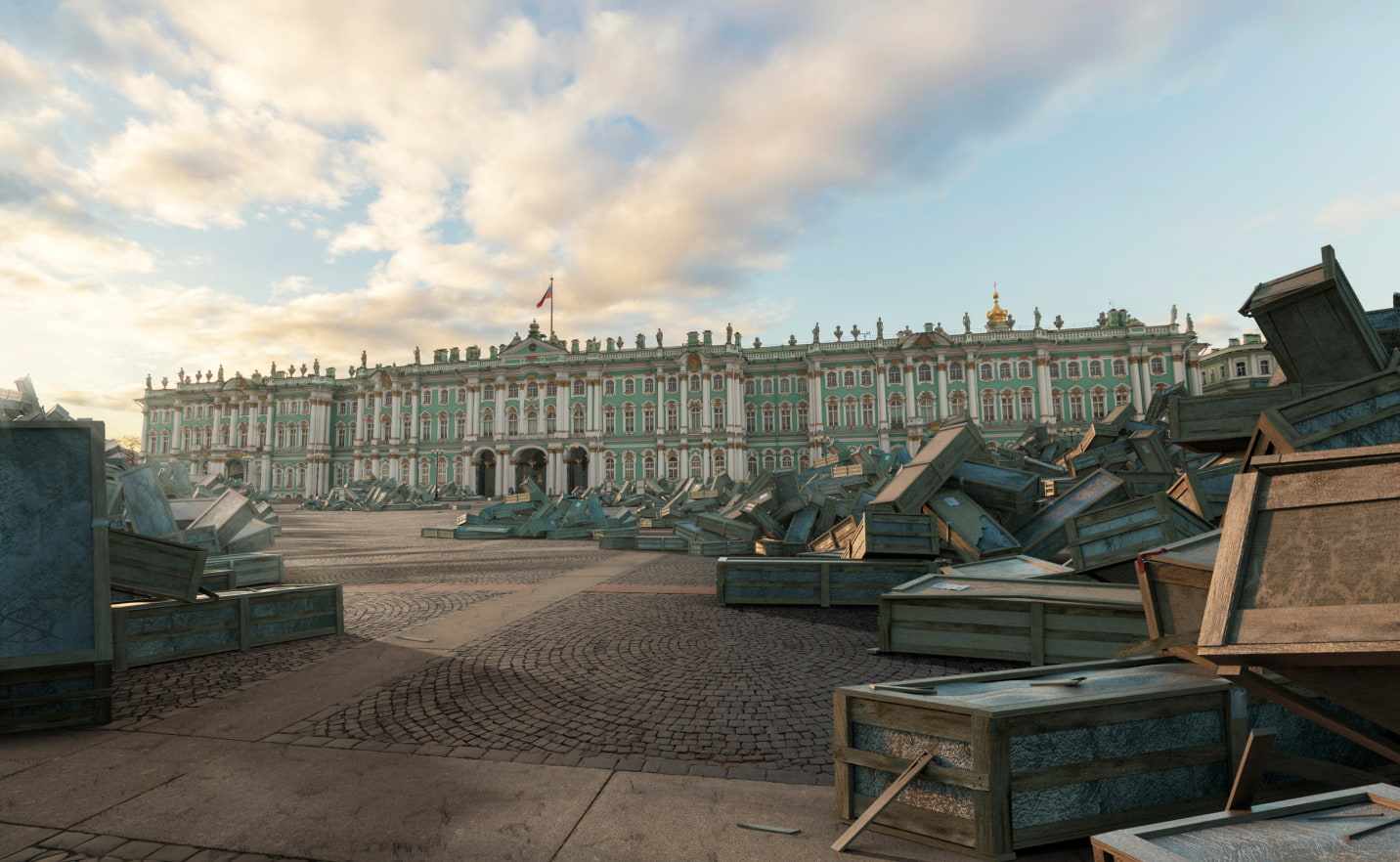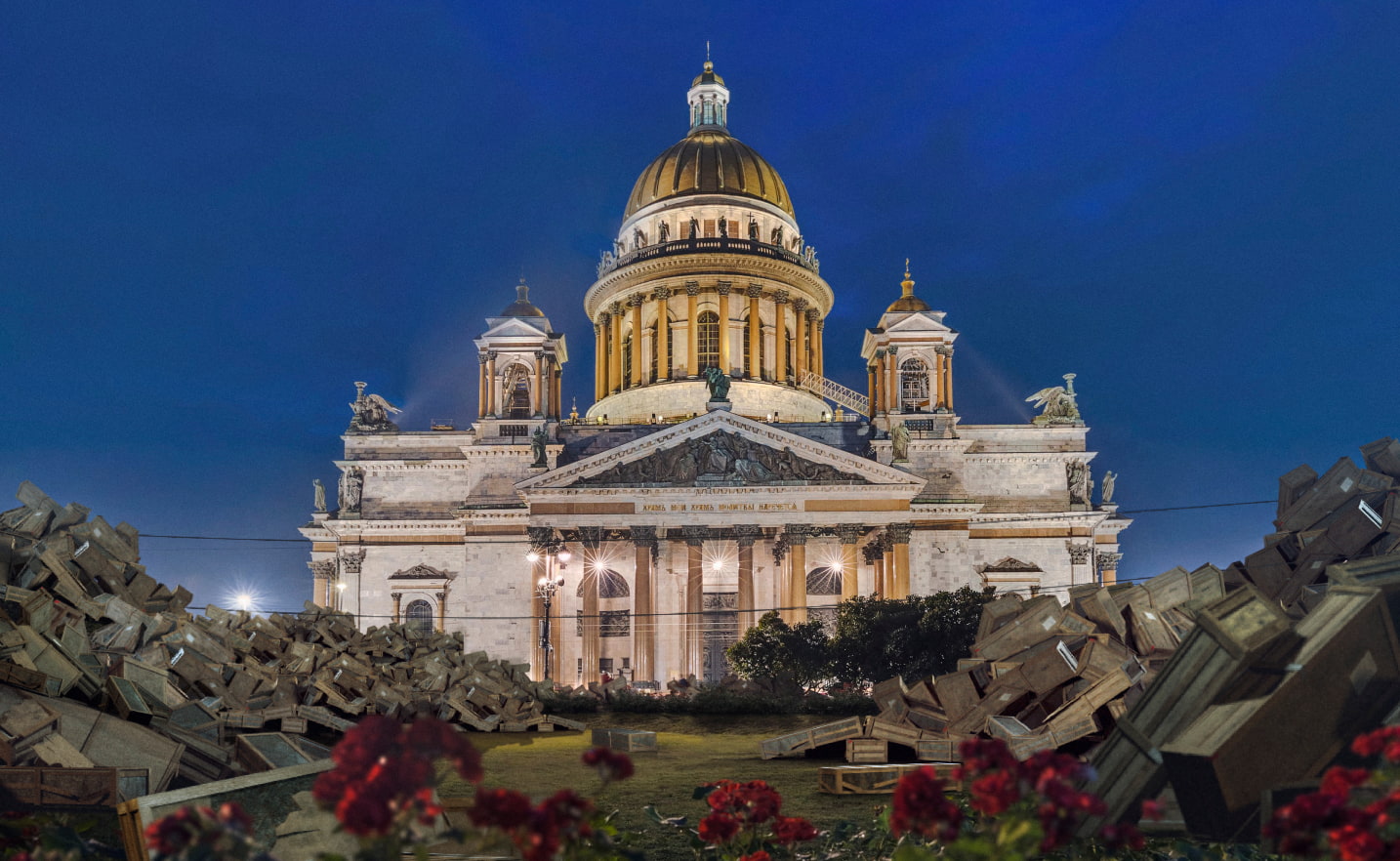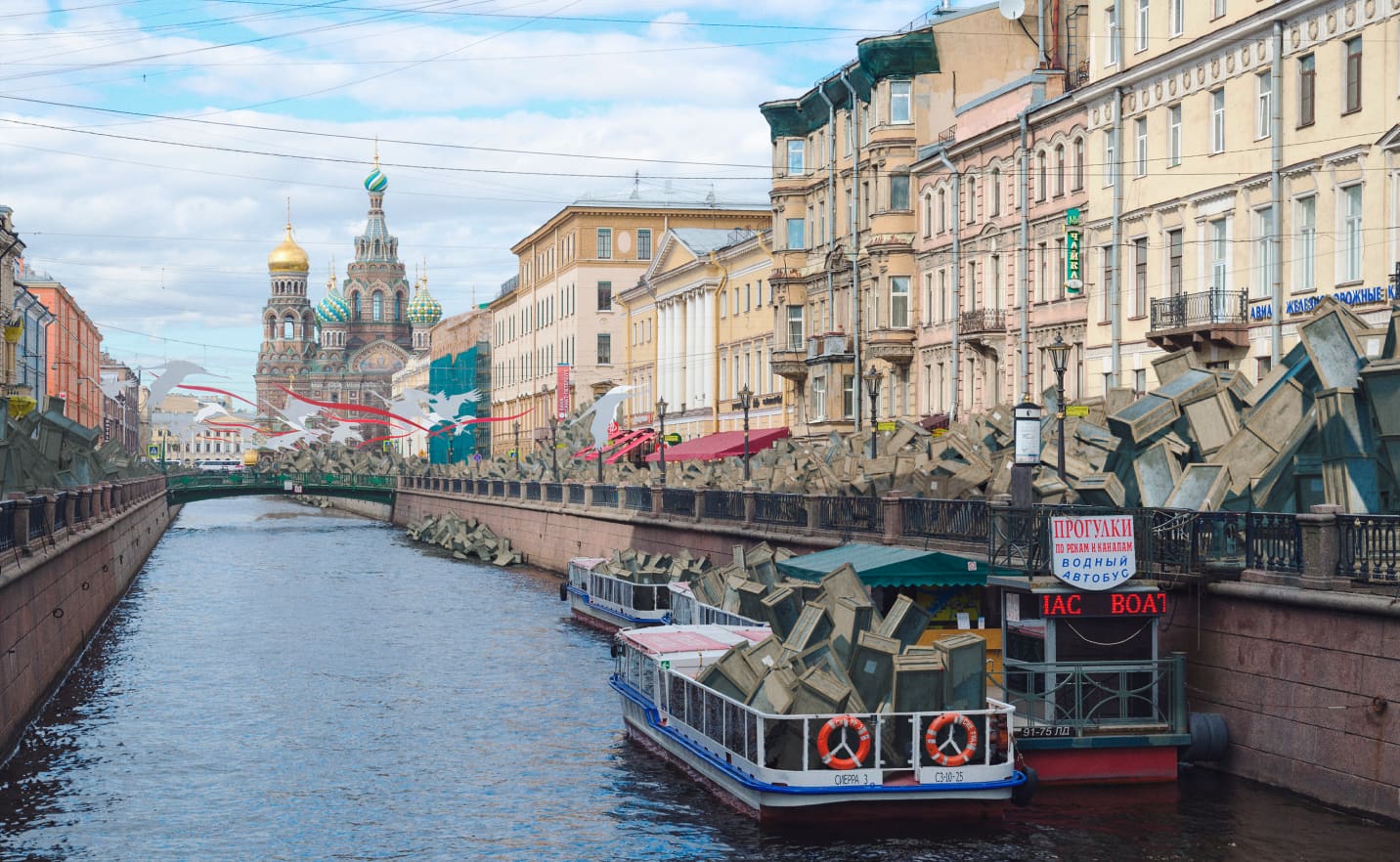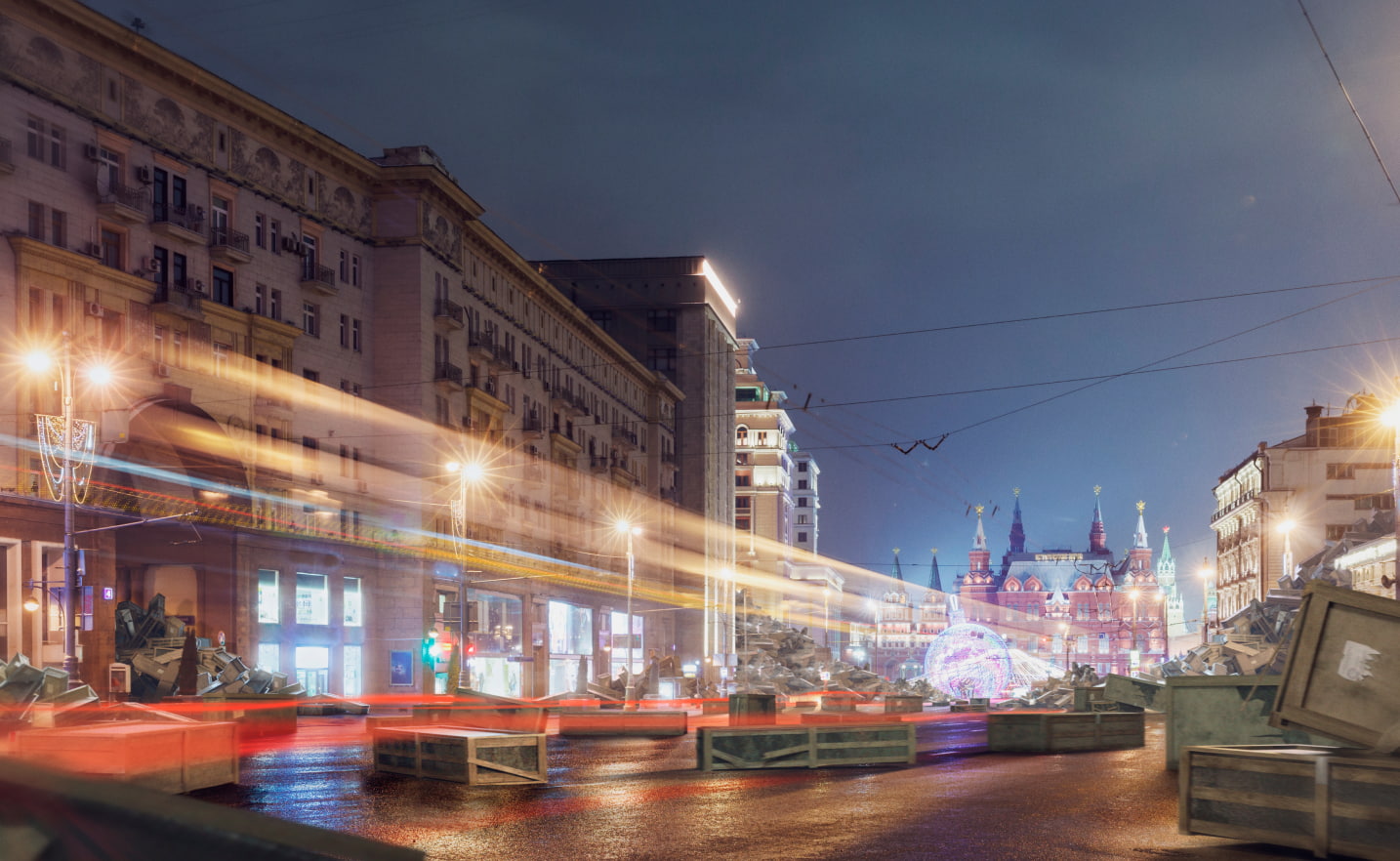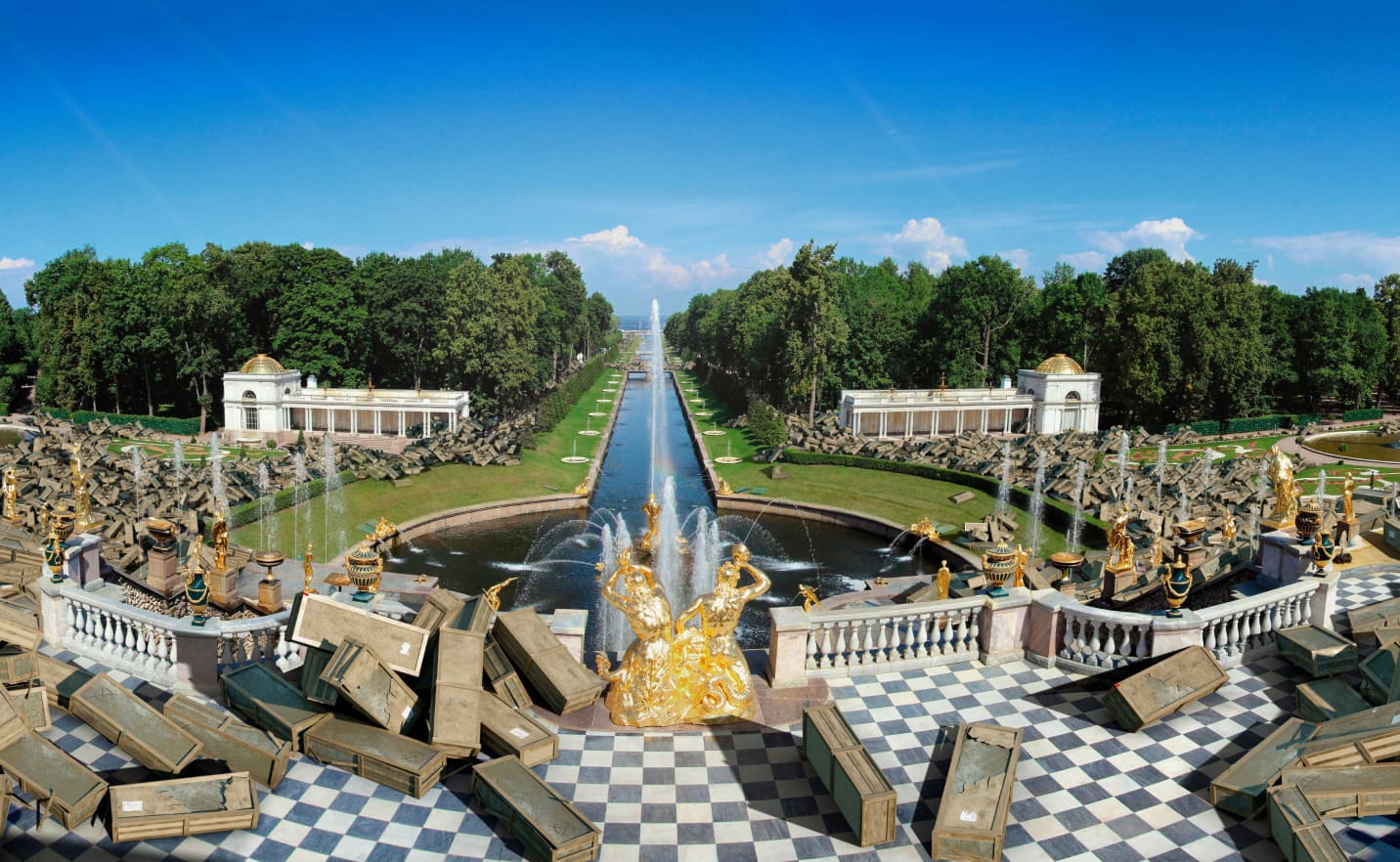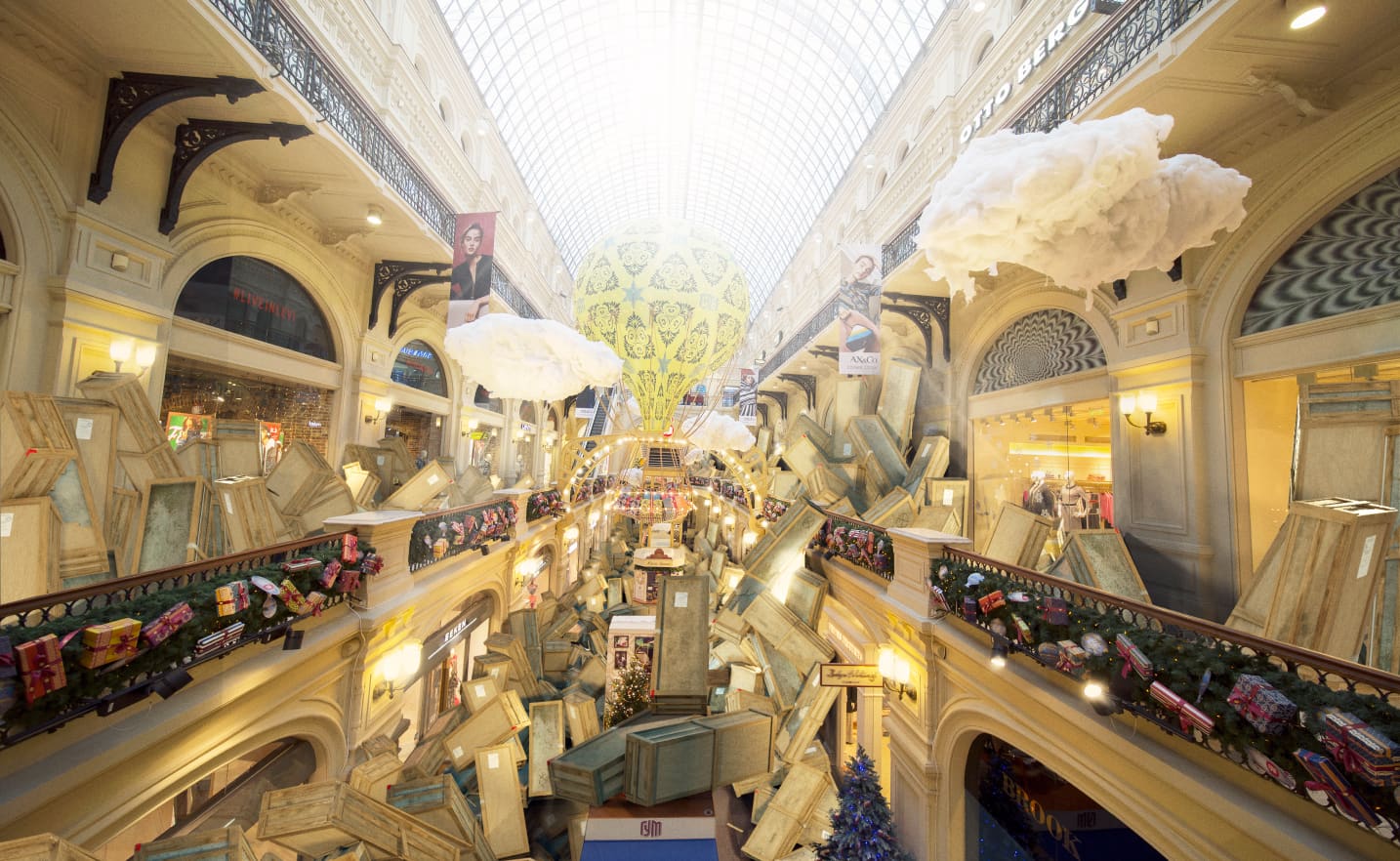Imaginary Cargo-200 Journey
Maria Gvardeitseva
Paris, France, 2022
Illustration, Graphic Design
Eleven pieces of digital art and an installation - put a human face on statistics to show the world the depth of the tragedy happening in Ukraine. The artist creates a hyperrealistic visualization of the touristic places of so-called two Russian capitals - Moscow and Saint Petersburg - with their tourists being replaced by coffins. Thus abstract losses are transformed into a striking and palpable reality. Maria Gvardeitseva reminds us once again the unbearable horror of war where people lose their history, their individuality and become integral and dehumanized parts of weapons.
